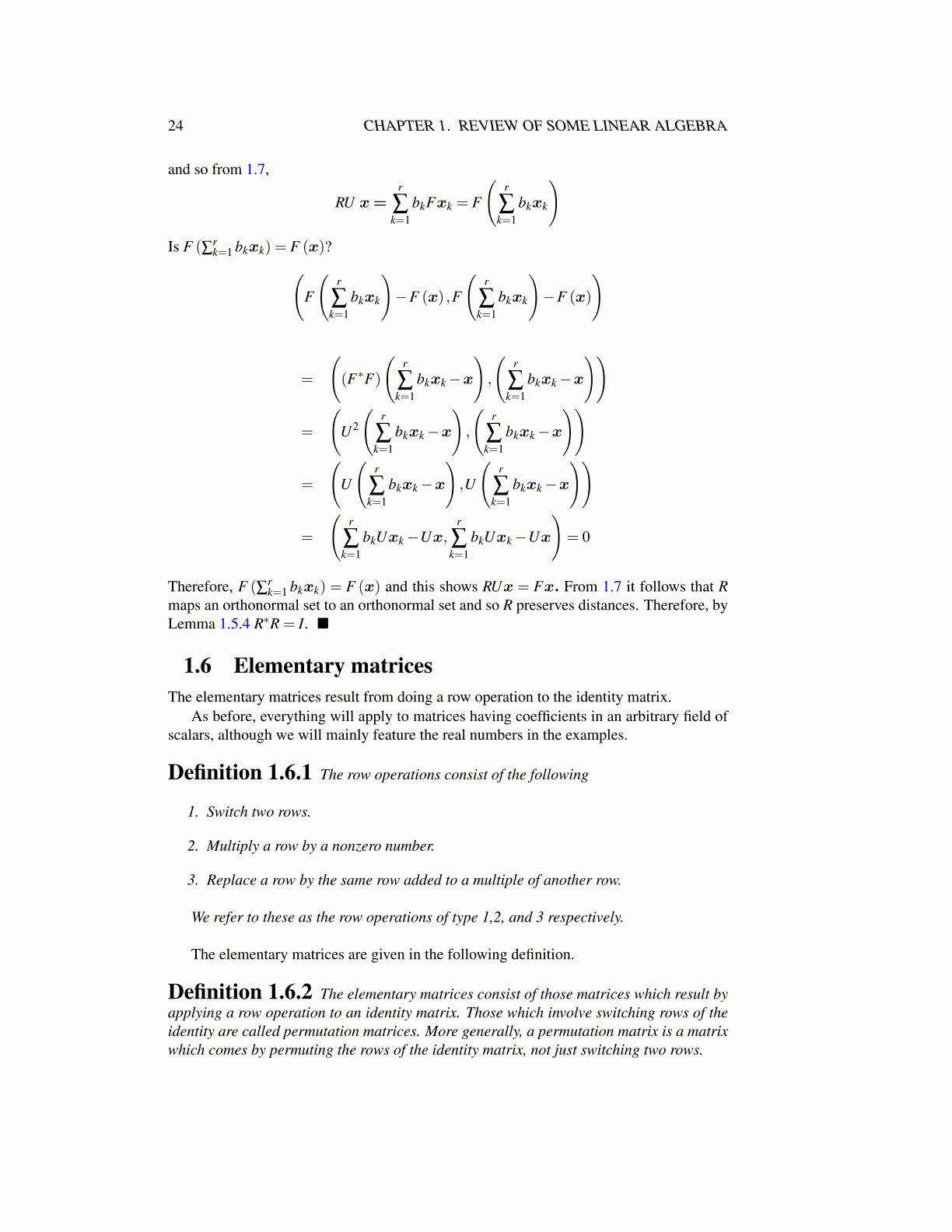
24 CHAPTER 1. REVIEW OF SOME LINEAR ALGEBRA
and so from 1.7,
RU x=r
∑k=1
bkFxk = F
(r
∑k=1
bkxk
)Is F (∑r
k=1 bkxk) = F (x)?(F
(r
∑k=1
bkxk
)−F (x) ,F
(r
∑k=1
bkxk
)−F (x)
)
=
((F∗F)
(r
∑k=1
bkxk−x
),
(r
∑k=1
bkxk−x
))
=
(U2
(r
∑k=1
bkxk−x
),
(r
∑k=1
bkxk−x
))
=
(U
(r
∑k=1
bkxk−x
),U
(r
∑k=1
bkxk−x
))
=
(r
∑k=1
bkUxk−Ux,r
∑k=1
bkUxk−Ux
)= 0
Therefore, F (∑rk=1 bkxk) = F (x) and this shows RUx = Fx. From 1.7 it follows that R
maps an orthonormal set to an orthonormal set and so R preserves distances. Therefore, byLemma 1.5.4 R∗R = I. ■
1.6 Elementary matricesThe elementary matrices result from doing a row operation to the identity matrix.
As before, everything will apply to matrices having coefficients in an arbitrary field ofscalars, although we will mainly feature the real numbers in the examples.
Definition 1.6.1 The row operations consist of the following
1. Switch two rows.
2. Multiply a row by a nonzero number.
3. Replace a row by the same row added to a multiple of another row.
We refer to these as the row operations of type 1,2, and 3 respectively.
The elementary matrices are given in the following definition.
Definition 1.6.2 The elementary matrices consist of those matrices which result byapplying a row operation to an identity matrix. Those which involve switching rows of theidentity are called permutation matrices. More generally, a permutation matrix is a matrixwhich comes by permuting the rows of the identity matrix, not just switching two rows.